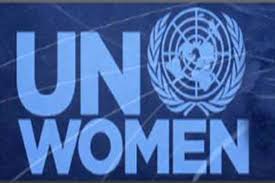The Inter-Parliamentary Union (IPU) and UN Women launched the ‘Women in Politics 2017 Map’ on March 16, 2017 in New York.The Women in Politics 2017 Map is the visual representation of women’s political empowerment in executive government and parliament as on January 1, 2017.
- It was unveiled on the sidelines of the ongoing session of the 61st Commission on the Status of Women (CSW) at United Nations. The CSW is a global organization that focuses on the empowerment and equality for women.
- The theme for 2017 CSW is Women’s Economic Empowerment In The Changing World Of Work.
- As per the report, the top nations that have high representation to women in the government and parliament includes: Rwanda, Bolivia, Cuba, Iceland, Nicaragua, Sweden, Senegal, Mexico, Finland and South Africa.
Key Highlights of the Report
According to the data presented by the Map, the number of women in executive government and in the parliaments worldwide has decreased with only marginal improvements since 2015.
- The report said that the number of women heads of state or heads of government fell from 19 to 17 since 2015, and progress in the number of women in the parliaments continues to be slow.
- The head of UN Women, Phumzile Mlambo-Ngcuka, called for reservation for women in lawmaking bodies across the world.

- Its data shows that the global average of women in national parliaments increased just slightly from 22.6 percent in 2015 to 23.3 percent in 2016.
- However, the number of female Speakers of the House raised up to the highest so far, with 53 out of 273 posts.
India’s Performance
As per the Map, India ranked 148 out of 193 UN member nations in representing women in the executive government.
- The data published in the report Women in Politics 2017 Map showed that women represents only 11.8 percent (64 MPs) of the 542-member Lok Sabha and 11 percent (27 MPs) of the 245-member Rajya Sabha.
- Besides, in terms of women ministers, India ranked 88 out of 186 countries with only five ministers (18.5 percent) in the cabinet as of January 1, 2017.
- This level of gender representation among women ministers was said to be better than the Asian average of 11% but far worse than the average representation by the leader nation Indonesia which gives 25.6% of its ministerial positions to women.
- India’s performance was worse even from nations like Rwanda, Kenya, Mozambique, South Sudan, Afghanistan, Bangladesh (91), Pakistan(89), China and Iraq.
Regional Performances
According to the report, women’s representation in America made the most significant gains by rising from 22.45 percent in 2015 to 25 percent.
- In Africa, 19.7 percent of the region’s ministerial posts were held by women. Similarly, in Europe, the total percentage of women lawmakers stood at 22.5 per cent.
- Among the Arab States, 9.7 percent of senior executive posts are held by women followed by Tunisia and the United Arab Emirates at 23.1 percent and 26.7 percent, respectively.
- In Asia, women hold 11 per cent of ministerial posts which is led by Indonesia whose Government is comprised of 25.7 percent women. Sri Lanka ranked 179 as far as representation of women goes.
Conclusion of the Report
The data depicted shows that progress in gender equality still remains slow in all structures of power and types of decision-making.
- Power is still firmly in men’s hands, and although we have witnessed some positive trends, much remains to be done if women are to play on a level field with men.
- Equal representation in positions of power is a fundamental precondition for truly effective and accountable democracy.





